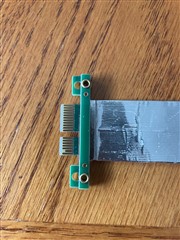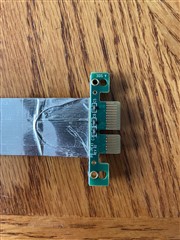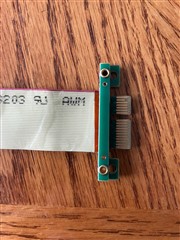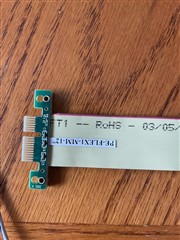Other Parts Discussed in Thread: TDA4VM, DRA829
Hi,
My goal is to perform the loopback test as described in these two parts of the documentation between a J721E EVM (as RC) and J721E EVM + fusion daughter card (as EP): https://software-dl.ti.com/jacinto7/esd/processor-sdk-linux-jacinto7/08_00_00_08/exports/docs/linux/Foundational_Components/Kernel/Kernel_Drivers/PCIe/PCIe_Root_Complex.html and https://software-dl.ti.com/jacinto7/esd/processor-sdk-linux-jacinto7/08_00_00_08/exports/docs/linux/Foundational_Components/Kernel/Kernel_Drivers/PCIe/PCIe_End_Point.html
As part of getting ready to configure the EVM to be an endpoint, I noticed some discrepancies and have a few questions on the user guide I'm hoping to get clarified here.
1. I have Adex Electronics cable to connect the 2 boards with part number PE-FLEX1-MM-12", while the example uses PE-FLEX1-MM-CX-3". Initially we obtained this cable based on recommendations, but after noticing this different, I'm curious if the lack of "CX" function in the cable will be an issue. Additionally, the user guide recommends removing the resistors CK+, CK-, and RST. However, I don't have these resistors, and my cable also doesn't have B side. Pictures attached below.
2. Under DTS modification, it lists steps to configure dra7-evm, dra72-evm, arm572x-idk, am65x-evm, and am65x-idk, but no mention of dra82x/tda4vm, which is the SoM I'm mounting on top of the J721E. Which instruction should I follow for configuring DTS?
3. Right under DTS mod, the guide describes patches to apply to alpha/beta boards for different SDK and Kernel versions. The listed versions are 6.x SDK (4.19 Kernel) and 7.x SDK (5.4 Kernel), but I am using 8.0 SDK with Kernel version 5.10.41. Is there another patch I need to apply, or does the 7.x SDK (5.4 Kernel) version suffice? Similarly, for setting up pci-epf-test device, it only addresses up to Kernel 4.14.
4. Where are the Linux Driver Configuration variables (such as CONFIG_PCI_ENDPOINT) located? I navigated into the /sys/kernel/config path, but could not figure out where to proceed next. Unless, are we supposed to follow the 3.2.1 section of user guide on customizing the configuration using the command: make ARCH=arm64 CROSS_COMPILE=aarch64-none-linux-gnu- <config type>? Where <config_type> is CONFIG_PCI_ENDPOINT, CONFIG_PCI_J721E, etc.?
Thanks






